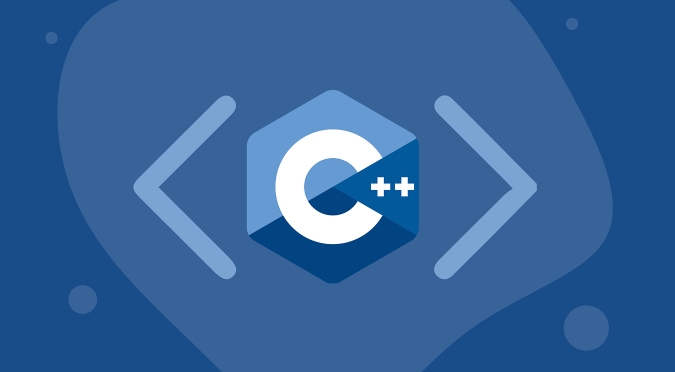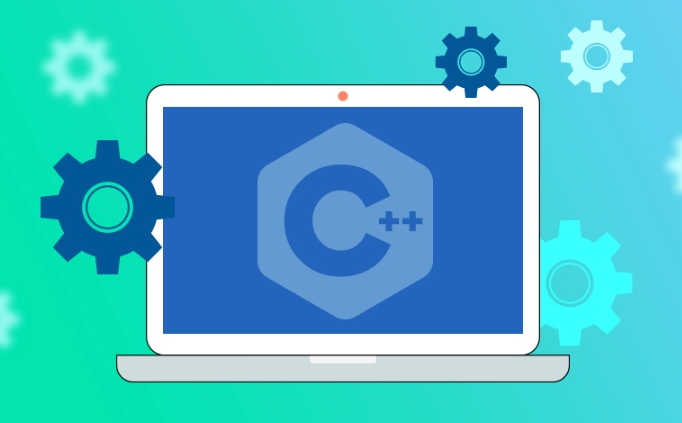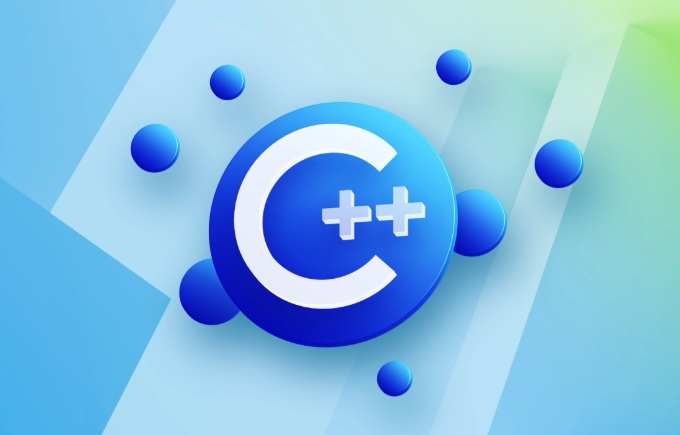C is a statically typed, compiled, and general programming language that supports procedural, object-oriented and generic programming. The design goal is to provide high performance and control over hardware. It originated in the C language, extends features such as classes, objects, exception handling, and at the same time retains the efficiency of C. C is mainly used in game development (such as Unreal Engine), system and embedded development (operating system, database), high-performance computing (financial transactions, image processing) and tool development (compiler). Learning suggestions include: 1. Master the basics of C language first; 2. Learn object-oriented features; 3. Be familiar with the STL standard library; 4. Understand advanced features such as RAII and smart pointers; 5. Start practicing with a simple project.

C is a statically typed, compiled, and general programming language that supports procedural programming, object-oriented programming, and generic programming. Its design goal is to allow programmers to maintain control over the hardware while developing high-performance applications. Simply put, C is an extension of the C language , adding modern programming features such as classes, objects, and exception handling, while retaining the efficiency and flexibility of C.

What can it be used for?
C's biggest advantage lies in its performance and resource control capabilities, so it is widely used in scenarios where high-speed operation or direct interaction with hardware.

Game Development: Building a High-Performance Game Engine
Many large-scale games and game engines (such as Unreal Engine) are written in C. The reason is simple: the game requires extremely high performance , especially in graphics rendering, physical simulation and real-time interaction. C allows developers to carefully control memory allocation and thread management, which is crucial to ensure smooth game operation.
- Common engines: Unreal Engine, Ogre, Irrlicht
- Platform support: PC, host, and mobile terminal can use C to develop game core logic
If you plan to do underlying game development or want to understand in-depth how game engines work, C is a language that cannot be avoided.

System/embedded development: the preferred language close to hardware
Low-level systems such as operating systems, drivers, embedded devices (such as routers, smartwatches) are usually developed using C or C. Because in these scenarios:
- Need to operate the hardware directly
- Limited memory resources
- High requirements for execution efficiency
For example, some modules of Windows, Linux kernel, and database systems such as MySQL and PostgreSQL all use C (or C) extensively to achieve high-performance data processing and storage mechanisms.
High-performance computing and financial systems: speed determines success or failure
In the fields of high-frequency trading systems, scientific computing, image processing, etc., execution speed and stability are key indicators. C also has a place in these areas:
- Financial industry: Many trading systems are implemented in C because they can complete a large number of calculations and make decisions in a very short time.
- Graphics and image processing: OpenCV, OpenGL and other libraries are based on C and are suitable for developing tasks such as image recognition, video encoding, etc.
- Tool development: Many performance-sensitive tools (such as compilers and interpreters) are also often written in C.
Such projects are often extremely latency-sensitive, and C provides enough room for optimization.
Study suggestions: Start from the basics and gradually deepen
If you want to learn C, you can start from the following aspects:
- First master the basic syntax of C language , especially the concepts of pointers, arrays, and structures.
- Then learn object-oriented features: classes, inheritance, polymorphism, constructors, and destructors.
- Master STL (standard template library), including common containers and algorithms such as vector, map, and string.
- Understand advanced features such as RAII, smart pointers, and mobile semantics.
There are many free resources online, such as:
- LearnCPP
- There are also many Chinese tutorials on Bilibili that are more detailed
Don't want to make a complete game or system from the beginning, practice with small projects first, such as writing a simple calculator or file reading and writing program.
Basically that's it. C is not the fastest language (sometimes not as good as Rust) or the easiest language to learn (certainly more complicated than Python), but it finds a good balance between performance and control. If you pursue efficiency and like to control details, it is a good choice.
The above is the detailed content of What is C and what is it used for?. For more information, please follow other related articles on the PHP Chinese website!

Hot AI Tools

Undress AI Tool
Undress images for free

Undresser.AI Undress
AI-powered app for creating realistic nude photos

AI Clothes Remover
Online AI tool for removing clothes from photos.

Clothoff.io
AI clothes remover

Video Face Swap
Swap faces in any video effortlessly with our completely free AI face swap tool!

Hot Article

Hot Tools

Notepad++7.3.1
Easy-to-use and free code editor

SublimeText3 Chinese version
Chinese version, very easy to use

Zend Studio 13.0.1
Powerful PHP integrated development environment

Dreamweaver CS6
Visual web development tools

SublimeText3 Mac version
God-level code editing software (SublimeText3)
 Using std::chrono in C
Jul 15, 2025 am 01:30 AM
Using std::chrono in C
Jul 15, 2025 am 01:30 AM
std::chrono is used in C to process time, including obtaining the current time, measuring execution time, operation time point and duration, and formatting analysis time. 1. Use std::chrono::system_clock::now() to obtain the current time, which can be converted into a readable string, but the system clock may not be monotonous; 2. Use std::chrono::steady_clock to measure the execution time to ensure monotony, and convert it into milliseconds, seconds and other units through duration_cast; 3. Time point (time_point) and duration (duration) can be interoperable, but attention should be paid to unit compatibility and clock epoch (epoch)
 What is the volatile keyword in C ?
Jul 04, 2025 am 01:09 AM
What is the volatile keyword in C ?
Jul 04, 2025 am 01:09 AM
volatile tells the compiler that the value of the variable may change at any time, preventing the compiler from optimizing access. 1. Used for hardware registers, signal handlers, or shared variables between threads (but modern C recommends std::atomic). 2. Each access is directly read and write memory instead of cached to registers. 3. It does not provide atomicity or thread safety, and only ensures that the compiler does not optimize read and write. 4. Constantly, the two are sometimes used in combination to represent read-only but externally modifyable variables. 5. It cannot replace mutexes or atomic operations, and excessive use will affect performance.
 How to get a stack trace in C ?
Jul 07, 2025 am 01:41 AM
How to get a stack trace in C ?
Jul 07, 2025 am 01:41 AM
There are mainly the following methods to obtain stack traces in C: 1. Use backtrace and backtrace_symbols functions on Linux platform. By including obtaining the call stack and printing symbol information, the -rdynamic parameter needs to be added when compiling; 2. Use CaptureStackBackTrace function on Windows platform, and you need to link DbgHelp.lib and rely on PDB file to parse the function name; 3. Use third-party libraries such as GoogleBreakpad or Boost.Stacktrace to cross-platform and simplify stack capture operations; 4. In exception handling, combine the above methods to automatically output stack information in catch blocks
 What is a POD (Plain Old Data) type in C ?
Jul 12, 2025 am 02:15 AM
What is a POD (Plain Old Data) type in C ?
Jul 12, 2025 am 02:15 AM
In C, the POD (PlainOldData) type refers to a type with a simple structure and compatible with C language data processing. It needs to meet two conditions: it has ordinary copy semantics, which can be copied by memcpy; it has a standard layout and the memory structure is predictable. Specific requirements include: all non-static members are public, no user-defined constructors or destructors, no virtual functions or base classes, and all non-static members themselves are PODs. For example structPoint{intx;inty;} is POD. Its uses include binary I/O, C interoperability, performance optimization, etc. You can check whether the type is POD through std::is_pod, but it is recommended to use std::is_trivia after C 11.
 How to call Python from C ?
Jul 08, 2025 am 12:40 AM
How to call Python from C ?
Jul 08, 2025 am 12:40 AM
To call Python code in C, you must first initialize the interpreter, and then you can achieve interaction by executing strings, files, or calling specific functions. 1. Initialize the interpreter with Py_Initialize() and close it with Py_Finalize(); 2. Execute string code or PyRun_SimpleFile with PyRun_SimpleFile; 3. Import modules through PyImport_ImportModule, get the function through PyObject_GetAttrString, construct parameters of Py_BuildValue, call the function and process return
 What is function hiding in C ?
Jul 05, 2025 am 01:44 AM
What is function hiding in C ?
Jul 05, 2025 am 01:44 AM
FunctionhidinginC occurswhenaderivedclassdefinesafunctionwiththesamenameasabaseclassfunction,makingthebaseversioninaccessiblethroughthederivedclass.Thishappenswhenthebasefunctionisn’tvirtualorsignaturesdon’tmatchforoverriding,andnousingdeclarationis
 How to pass a function as a parameter in C ?
Jul 12, 2025 am 01:34 AM
How to pass a function as a parameter in C ?
Jul 12, 2025 am 01:34 AM
In C, there are three main ways to pass functions as parameters: using function pointers, std::function and Lambda expressions, and template generics. 1. Function pointers are the most basic method, suitable for simple scenarios or C interface compatible, but poor readability; 2. Std::function combined with Lambda expressions is a recommended method in modern C, supporting a variety of callable objects and being type-safe; 3. Template generic methods are the most flexible, suitable for library code or general logic, but may increase the compilation time and code volume. Lambdas that capture the context must be passed through std::function or template and cannot be converted directly into function pointers.
 What is a null pointer in C ?
Jul 09, 2025 am 02:38 AM
What is a null pointer in C ?
Jul 09, 2025 am 02:38 AM
AnullpointerinC isaspecialvalueindicatingthatapointerdoesnotpointtoanyvalidmemorylocation,anditisusedtosafelymanageandcheckpointersbeforedereferencing.1.BeforeC 11,0orNULLwasused,butnownullptrispreferredforclarityandtypesafety.2.Usingnullpointershe






